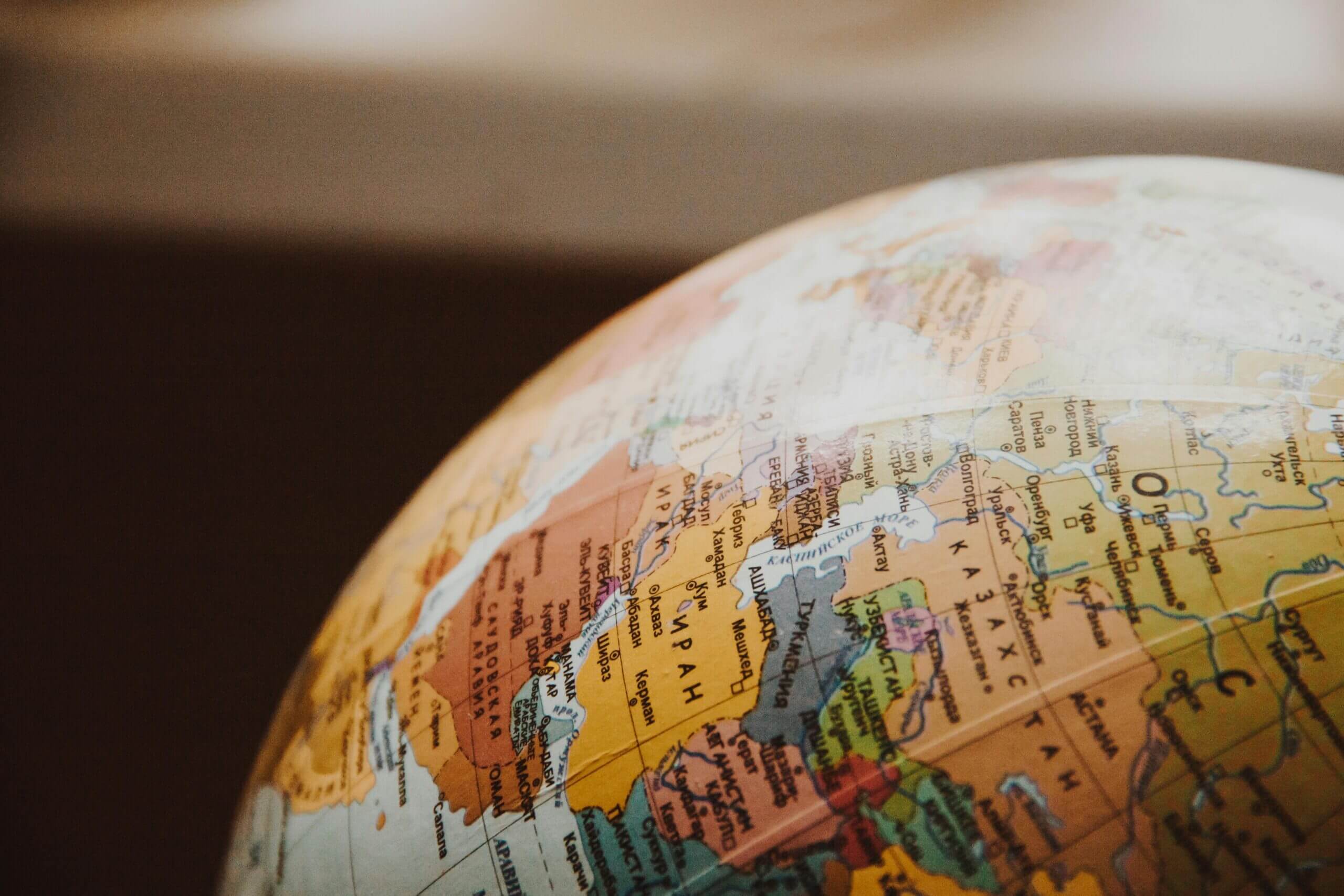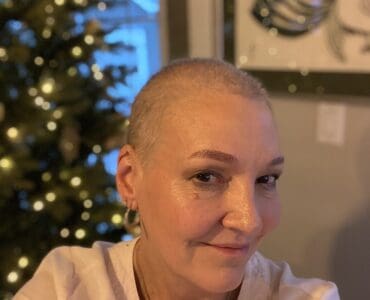I get questions all the time from my followers. In this blog, I’m here to answer your top ten questions about breast cancer. True to the AskEllyn vibe, you’ll note that the majority of the questions are lifestyle rather than medical in nature. I always say a breast cancer diagnosis etches itself on your soul. These were the kinds of things I wondered about as well when I was first diagnosed, so I am happy to answer them here.
If you have other questions about life with breast cancer, don’t hesitate to drop your thoughts in the comments, reach out through our contact form, or follow me on Instagram and pose your question there. I’m always there to respond!
Here goes:
Question 1: Do you lose your eyelashes during chemo?
Yes, I did indeed lose my eyelashes during my course of chemotherapy. It wasn’t immediate like the hair on my head. They hung on bravely for a while, but gradually started to thin and before I knew it, they vanished leaving me with an entirely bare look. As you can imagine, this didn’t just affect my physical appearance but also had a deep emotional impact. The sense of losing one’s femininity can hit particularly hard. You might think that looking like you have cancer wouldn’t impact how you feel, but for me, there was a feeling of ungroundedness that crept in as my external appearance began to change. Some women prior to chemo have microblading done to create permanent eyebrows. I didn’t go that route but to make me feel less self-conscious I bought temporary eyebrow tattoos from Amazon that were very realistic. Read more about it and get some tips and tricks for dealing with eyebrow loss in my blog on the topic.
Question 2: How do you sleep with mastectomy drains?
Sleeping with mastectomy drains is definitely a challenge, and it’s one of those practical post-surgery realities that no one prepares you for. These little buddies, as I used to call them, require some management but there are ways to make the experience less uncomfortable.
What worked for me, personally, was sleeping in a semi-upright position. We had just purchased a recliner for our home so I slept downstairs until my drains were removed, but you can alsoI load the bed up with pillows or use a wedge to support your back. The upright position provided some relief as it prevented the drains from pulling due to gravity. Maintaining these positions also minimized the movement of the drains. And I didn’t have to worry about my husband accidentally rolling over and tugging on one of them.
I found it helpful to wear a surgical camisole equipped with built-in drain pockets. This garment really helped to keep everything secure as I moved around or lay down.
However, I do remind you, these are just the things that worked for me. It’s paramount to consult with your medical team about any post-surgery care and concerns.
A good night’s sleep is crucial for healing, so while these drains can be a nuisance, remember, it is temporary. With time (mine came out at six days), they will be removed and you can start the next stage of your recovery.
Read more pro tips about mastectomy recovery here
Question 3: How do you style short curly hair after chemo?
Styling short, curly hair after chemo, affectionately called ‘chemo curls’, was quite an adventure for me. At first, when my hair started to regrow, it came in very soft and straight, almost like duck fluff. To my surprise, over time those straight strands turned into bouncy curls.
Styling them wasn’t as challenging as I initially thought. While my hair was still short, I tried a scalp massager along with a castor oil formulation on my scalp to keep the blood flow stimulated. This seemed to help with keeping my hair healthy.
As for the styling part, I chose to embrace the curls and added some product to define them and reduce frizz. Lightweight curl creams and a gentle, hydrating shampoo were my go-to choices. I experimented with headbands. I also found that not tugging or pulling the hair, and letting it air dry naturally, helped maintain the shape of the curls.
Remember, the key is to keep things simple and comfortable for you. You’ll eventually find the style that showcases this new phase of you in the best light.
Question 4: When do chemo curls go away?
The “chemo curls” are quite a fascinating counterpart of the journey itself. For me, these bouncy curls didn’t go away quickly. It took about two and a half months after chemotherapy for my hair to start growing back, but even after this period, the curls stayed. Though, the duration and the texture of hair regrowth can vary for each person.
While my hair initially came in straight and soft, it soon developed into what is known as “chemo curls.” The new hair texture was wild but quite lovely in its way. Over time, as my hair grew, the curls somewhat softened. However, one of the unexpected surprises along the recovery path was the change of hair color. My hair, which was now salt and pepper, wasn’t as grey as I’d thought it would be. I’m now two and a half years out from finishing chemotherapy and my hair is still ringlet curly.
The appearance of my curls and how long they chose to stick around was a small reminder of the journey I’ve been on. Not only was it a physical change, but it was also a psychological transition of accepting this ‘new normal’ post-chemo. It certainly is a hot topic of conversation now when I bump into people who knew the “old” me.
Remember, your journey might look very different. It’s a unique path for each of us, so embrace the change in the way that feels right for you. Hair change can just be an external symbol of the strength and resilience you have demonstrated internally.
Here are five things that might surprise you about chemo curls.
Question 5: Are there essential oils for hair regrowth?
After my chemotherapy, I found that my hair started growing back on its own, even though it was different from what it used to be – it returned curly and thicker. During this time, I took a proactive approach towards taking care of my scalp and overall hair health. I particularly focused on nourishing my scalp with castor oil mixed formulations to stimulate blood flow.
I have heard of people using essential oils as part of their hair treatment routines, but I want to clarify that my choice to use a castor oil formulation was very much a personal decision and not necessarily indicative of its effectiveness or suitability for others. Also, it is important to remember that essential oils should be used with caution as they can cause skin irritation or allergic reactions for some people. If you are considering trying out essential oils or any kind of new hair treatment regimen, especially if you are sensitive or in active treatment, I’d recommend having a chat with your healthcare provider or a professional hair care expert first. They can offer you insights tailored to your specific circumstances.
Question 6: What are your recommendations for swimwear post-mastectomy?
After undergoing my mastectomy and choosing an aesthetic flat closure (AFC), I had to reevaluate what swimwear would work best for my new body. I tried reaching out to several popular and inclusive women’s fashion brands about their post-mastectomy recommendations, but I was dismayed to find the suggestions were often geared more towards disguise and concealment, rather than celebrating a survivor’s body and scars.
Coming from a lifetime of being a D cup, my mastectomy invited me to explore and embrace styles I previously couldn’t. I found my wardrobe to be more versatile, experimenting with garments that fit my new, streamlined body, such as halter necks, spaghetti straps, and backless pieces. Translating this experimentation to swimwear, I felt a refreshing sense of freedom. I could now wear one-pieces with low backs, bikini tops with stylish designs – they all highlighted my body in a new, empowering way.
My ultimate recommendation would be to choose swimwear that provides comfort first and foremost, and expresses your personal style. Choose pieces which you think celebrate and honor your body, and remember that a mastectomy doesn’t delineate your options, it merely redefines them. Here are some of my specific swimwear style suggestions.
Question 7: Do you have recommendations for post-mastectomy pajamas?
Oh, the topic of post-mastectomy pajamas brings back a memory of my own experience. After my surgery, I found comfort and solace in the little things, and having the right clothing was part of that. I quickly discovered that button-up pajama sets were a lifesaver since lifting my arms over my head was near impossible, and exactly what you’re supposed to avoid right after surgery.
Keep comfort and practicality front of mind when you’re shopping. Look for soft breathable fabrics, such as organic cotton or bamboo rayon, as they will be gentle on the skin. I also found the kind of pajamas with a pocket on the inside to hold the surgical drain worked wonders, so you might consider that too. But don’t forget about selecting something that makes you feel beautiful as well. You and your body have been through a lot, so while your pajamas need to be practical, they should also make you feel good about yourself.
However, please remember that our bodies can react differently, what worked for me might not work for you or any other woman on this journey. But I am certain that the perfect post-mastectomy pajamas are out there waiting for you.
I love KickIt’s Post Surgical Pajamas, created by a fellow cancer survivor. This bamboo set is also button up and soft.
Question 8: What are your top mastectomy recovery tips?
My experience with mastectomy recovery involved a mix of physical and emotional elements.
First, the healthier you are going into surgery, the better the chances of a smooth recovery. Despite this being a major surgery, I was up and about quickly and able to resume my regular workout routine in just three weeks with my surgeon’s blessing. I attribute this to my healthy lifestyle and lifelong commitment to exercise.
Managing surgical drains was a significant aspect post-mastectomy. I used a surgical cami with drain pockets for this, and combined over-the-counter pain relievers to manage the discomfort. Apart from these, I can’t stress enough the importance of being kind to oneself during this period. I gratefully accepted help from loved ones and provided myself ample time to rest and heal.
I started with physical therapy soon after radiation. Targeted exercises and manual techniques, like torso rotations and stretches, helped me regain my range of motion and keep my muscles strong.
Emotionally, exploring and accepting my new body greatly helped. I started wearing clothing styles that I previously couldn’t wear, experimenting with backless dresses, spaghetti straps, and more.
Finally, remember to discuss any concerns with your medical team. From chronic pain to emotional distress, open communication helped me get the necessary care I needed. Each person’s journey is unique, so your experience may differ. May you find strength in your journey, just as I found mine.
Question 9: How common is breast cancer for someone in their 20s?
Breast cancer in one’s 20s is much less common, but it certainly can happen and there is unfortunately a rising incidence of breast cancer occurring among women in their 20s and 30’s. It’s important to note that breast cancer does not discriminate based on age or lifestyle. It blindsided me – a health-aware individual who enjoyed yoga and balanced meals, and with no family history of the disease. If there’s anything I’ve learned on my journey, it’s that cancer displays no reverence for our own personal narratives or expectations.
When I started sharing my story publicly, a shocking outcome was hearing about early diagnoses among my peers who decided, often from hearing my account, to get their mammograms. Certainly not every lump means cancer, but it emphasizes the importance of translating the awareness into actions like self-examinations and, when recommended by a medical professional, mammograms.
However, I always encourage anyone, regardless of their age, to remain vigilant about their health and not to dismiss any concerns or symptoms simply because they’re young. Always listen to your body and consult your healthcare professional if something feels off. Speaking from my experience, age isn’t a shield against breast cancer, and awareness coupled with early detection improves outcomes. This is a story you’ll hear being echoed by Katie Thurston of Bachelor an Bachelorette fame. She was diagnosed recently at the age of 34 and is now in treatment for Stage IV breast cancer.
Question 10: Who are some celebrities who support breast cancer awareness?
Many celebrities lend their voices to support breast cancer awareness. One that comes to mind and truly made an impact is Angelina Jolie who brought significant attention to the BRCA mutation. She publicly shared her decision to undergo a prophylactic double mastectomy. Her openness helped many women feel less isolated and more empowered to take control of their health.
More recently, we heard from actress Olivia Munn, who, after learning she had a high-risk profile, got involved in the cause. During the Novartis Your Attention Please Super Bowl ad we also saw Wanda Sykes and Hailey Steinfeld speak out in favor of women getting screened for breast cancer. What makes these celebrities remarkable is not just their fame, but their decision to use their platform to highlight an issue that affects so many women worldwide. They remind us that breast cancer doesn’t discriminate, it doesn’t care if you’re an actress or a stay-at-home mom.
It’s important to recognize their contributions, but also to understand that each of us can play a role in creating awareness and supporting those affected by breast cancer in our own communities.
See my video intro to this topic on Top 10 Questions About Breast Cancer.



